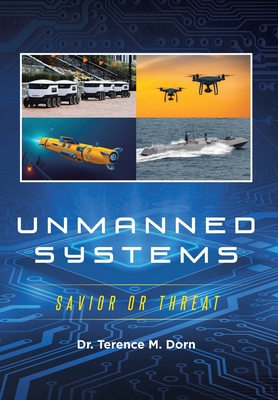Unmanned Systems: Savior or Threat

Unmanned Systems: Savior or Threat
The threat of an attack involving an unmanned system armed with a weapon of mass destruction is a present one. With two million drones projected to be flying US skies in 2020, unmanned aircraft systems in the air domain pose a significant challenge to the nation's security. Other technological advancements, such as artificial intelligence, combined with unmanned systems, have transformed the threat's very nature, yet the skies are not the only domain of concern. The technology is also developing rapidly in unmanned undersea and surface systems, expanding potential weapons of mass destruction delivery options. This publication is an examination of unmanned aerial systems (UAS), unmanned surface systems (USS), and unmanned undersea systems (UUS). The technological innovation that led to the global commercialization of UAS is underway with USS and UUS. Until recently, no known scholarly studies existed that examined the vulnerabilities of one sector of US critical infrastructure to attack by UAS until A Phenomenological Examination of US Nuclear Power Plants to Attack by Unmanned Aerial Systems was published late in 2020. According to the Nuclear Regulatory Commission (NRC), there had been fifty-seven UAS incursions over twenty-four US nuclear power plants in the past five years, representing one of sixteen sectors of US critical infrastructure (Gardiner 2016; Rogoway and Trevithick 2020; Hambling 2020). Federal departments and organizations have largely ignored the threat potential that UAS pose despite the strategic guidance laid out in the 2017 National Security Strategy of the US. The nation's national security demands a close examination of the vulnerabilities and is immediately working to close those security gaps. This publication will focus on the emergency of new UAS capabilities and highlight the latest technologies, capabilities, and the significant national security threat implications that UAS, USS, and UUS platforms represent to US critical infrastructure.
Descrierea produsului
The threat of an attack involving an unmanned system armed with a weapon of mass destruction is a present one. With two million drones projected to be flying US skies in 2020, unmanned aircraft systems in the air domain pose a significant challenge to the nation's security. Other technological advancements, such as artificial intelligence, combined with unmanned systems, have transformed the threat's very nature, yet the skies are not the only domain of concern. The technology is also developing rapidly in unmanned undersea and surface systems, expanding potential weapons of mass destruction delivery options. This publication is an examination of unmanned aerial systems (UAS), unmanned surface systems (USS), and unmanned undersea systems (UUS). The technological innovation that led to the global commercialization of UAS is underway with USS and UUS. Until recently, no known scholarly studies existed that examined the vulnerabilities of one sector of US critical infrastructure to attack by UAS until A Phenomenological Examination of US Nuclear Power Plants to Attack by Unmanned Aerial Systems was published late in 2020. According to the Nuclear Regulatory Commission (NRC), there had been fifty-seven UAS incursions over twenty-four US nuclear power plants in the past five years, representing one of sixteen sectors of US critical infrastructure (Gardiner 2016; Rogoway and Trevithick 2020; Hambling 2020). Federal departments and organizations have largely ignored the threat potential that UAS pose despite the strategic guidance laid out in the 2017 National Security Strategy of the US. The nation's national security demands a close examination of the vulnerabilities and is immediately working to close those security gaps. This publication will focus on the emergency of new UAS capabilities and highlight the latest technologies, capabilities, and the significant national security threat implications that UAS, USS, and UUS platforms represent to US critical infrastructure.
Detaliile produsului












